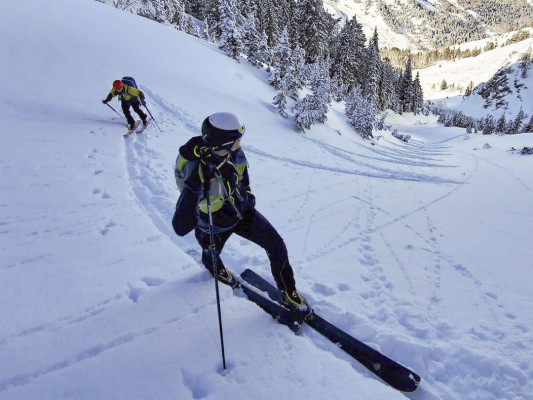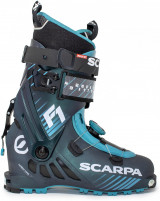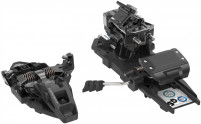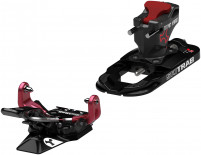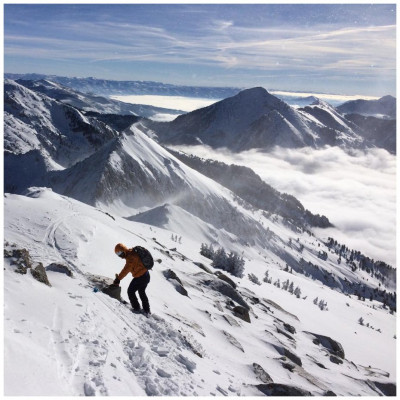10/20/2020 A Boomer's Guide To The Backcountry
By Jeff Mikaelian
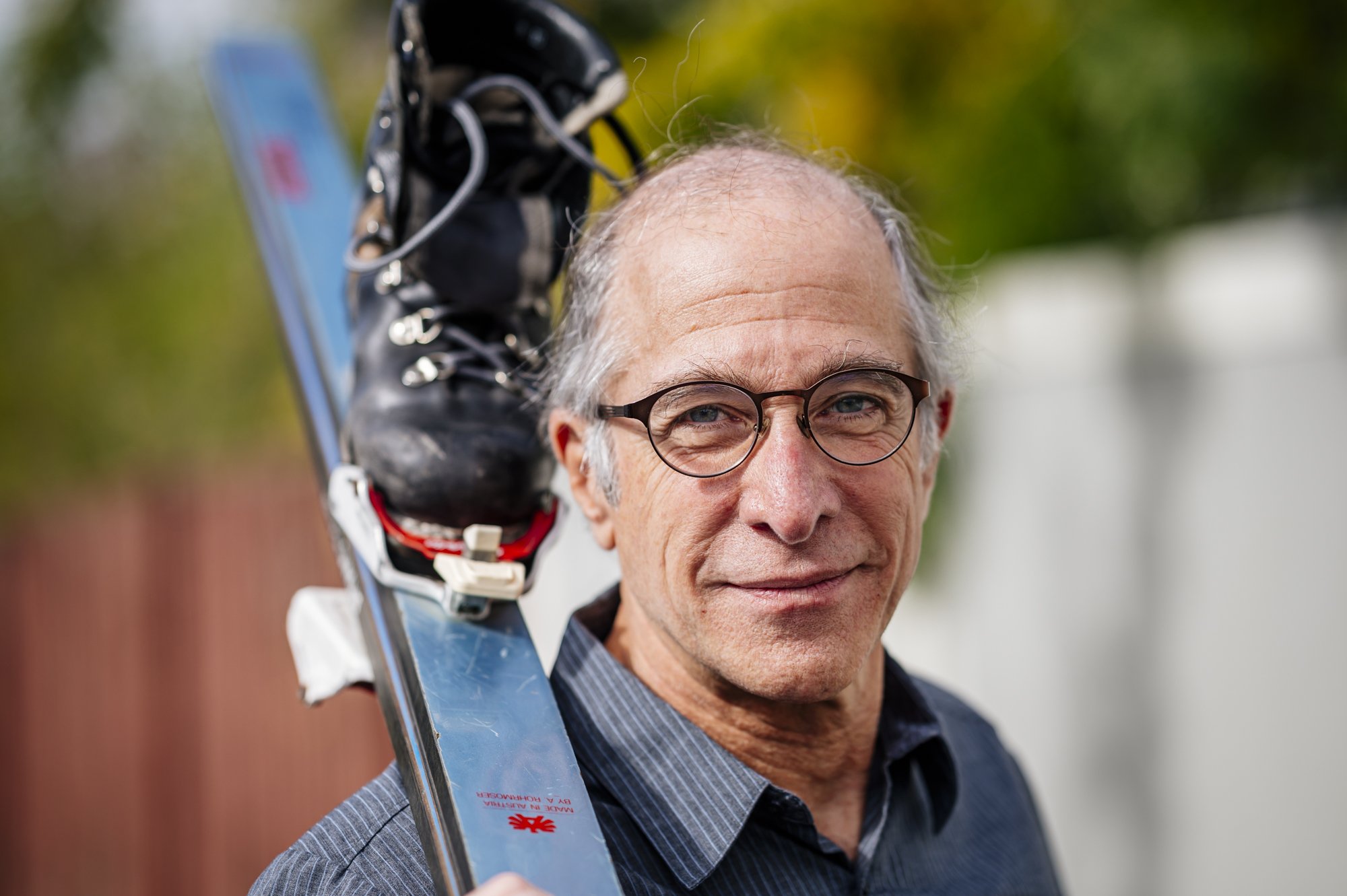
As the elder statesman at Skimo Co (age, not tenure), I am writing this article specifically for my fellow boomers who started skiing in the ‘60s and ‘70s. Certainly a fun and exciting time, but the gear was very lacking compared to what we have now. So for those of us who have stuck with skiing, our skills have been honed with not just time but also by compensating for inadequate gear. Ski choices back then were quite limited - it was either wooden skis or Head skis with metal… a lot of metal. Either way, a whopping 64mm underfoot was the norm. You may have even started on leather boots (laced or buckle) and safety bindings that weren’t actually so safe. Ski brakes weren’t invented yet, so leashes it was. These could be terrifying when connected to a 205 Head 360.
Whether you’ve been riding cable a long time or have gotten back into skiing after a busy career and raising kids, you may have noticed that the resort experience is no longer quite the same. The traffic getting to your local hill is frustrating, the slopes are crowded, and you’re left wondering “where’s the powder?” after every storm. Or maybe you’re like me and can’t stand the idea of skiing the same groomers day after day. Regardless, those are just a few of the many reasons to start checking out the backcountry. A single day in the backcountry can renew your passion for skiing as you experience different scenic terrain, untracked powder as far as you can see, and peaceful silence.
Skiing Just Got Fun Again
Once you decide to earn your turns, the first thing you need to do is consider your options. Ski touring opens up a lot of new ways to have fun on skis!
If you are lucky enough to live in a resort town, an increasingly popular activity is to tour on groomers at the resort. Known as “fitness laps,” it sure beats the heck out of exercising on a treadmill or stair stepper. Why do those when you can get some fresh air and have fun ripping your favorite freshly corduroyed groomer? Another option, and my personal favorite, is to simply ski untracked powder until your legs can’t hold you up anymore. Ski touring also enables you to ski as long as there’s still snow on the ground. The season isn’t over when Vail says so!
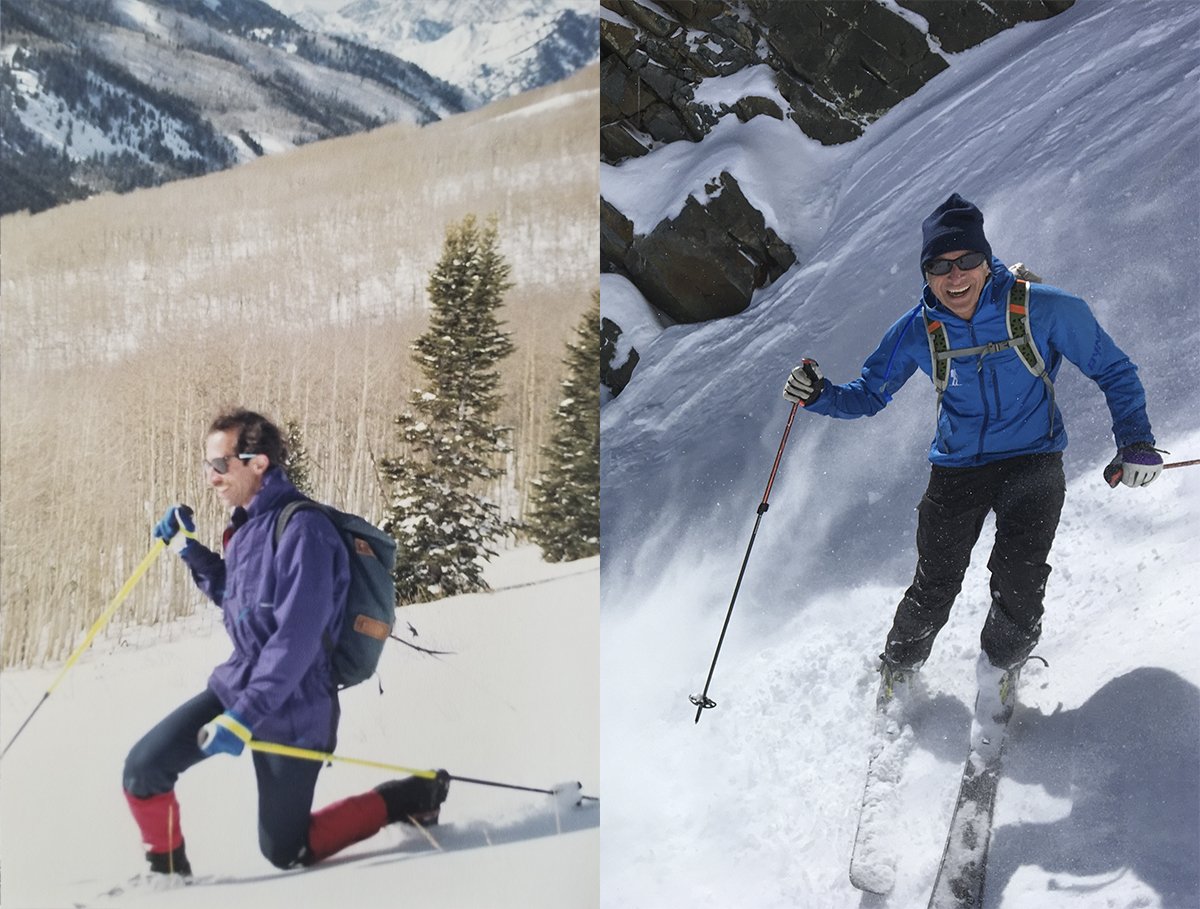
Before we go any further, it is important to address the elephant in the room: avalanche danger. Aside from avy gear, you will need to invest some time to learn about snow safety as well. This can be done through dedicated avalanche courses, mentorship, or a few days with a guide. The latter option will simultaneously help with learning how to use your gear and develop proper technique. It is also imperative that you learn how to read your local avalanche report (if there is one) as this will keep you out of trouble. Finally, we strongly encourage tourers of all abilities to read and reread “Staying Alive in Avalanche Terrain” by Bruce Tremper. The former avalanche forecaster’s writing style makes the critical information digestible and easy to understand.
While I acknowledge the term “backcountry” might be intimidating, it doesn’t have to be! Backcountry is an all encompassing word that spans the extremes of a mellow backyard hike to the steeps of Alaska. You can explore the backcountry at your own comfort level. Easygoing outings include adventuring beyond the ropes of the resort, touring through the hills of Vermont, skinning the Midwest woods, enjoying an overnight hut trip in Colorado, or simply lapping a powder glade in the Wasatch.
When you are ready to gear up, it’s important that you evaluate ski touring gear differently than you would resort gear. The two setups are not interchangeable. This is because you’ll be spending most of your time going uphill where weight and efficiency become very important factors. This article will help guide you through this process so that you can maximize your enjoyment out there.
Things Have Changed...
For folks who have already seen the light but are using old AT gear (looking at you frame bindings and heavy boots), we need to talk! And to the early adopters of Dynafit bindings, you were forward-thinking and we applaud you. Unfortunately though, those early TLT Comforts, Tri Steps, and others, are now decades old and potentially unsafe. Today’s bindings are lighter, have improved release characteristics, and offer greater functional variety for your specific needs.
And good news for the tele crowd! If you are on NTN boots and bindings, you can drop four pounds on those alone before you even get to skis and skins! I have witnessed the full evolution from leather boots to NTN bindings on big skis. We used to joke that they were reinventing alpine gear. Many that followed this path were eventually forced to hang it up and hop back on the lifts due to age and bad knees. If you’re still holding out, allow me to emphatically inform you that your gear is unnecessarily heavy! Trust me, I should know. I have spent most of my backcountry years on telemark gear but switched to lighter AT gear a few years back. Since then, I only occasionally miss dipping my knee. With this setup though, I can now hike more vert in a day and have much less hip and IT-band pain. If you are itching to get back out where the real untracked powder is, rest assured that the current tech bindings and boots really are that much better than tele gear and make for longer, easier days.
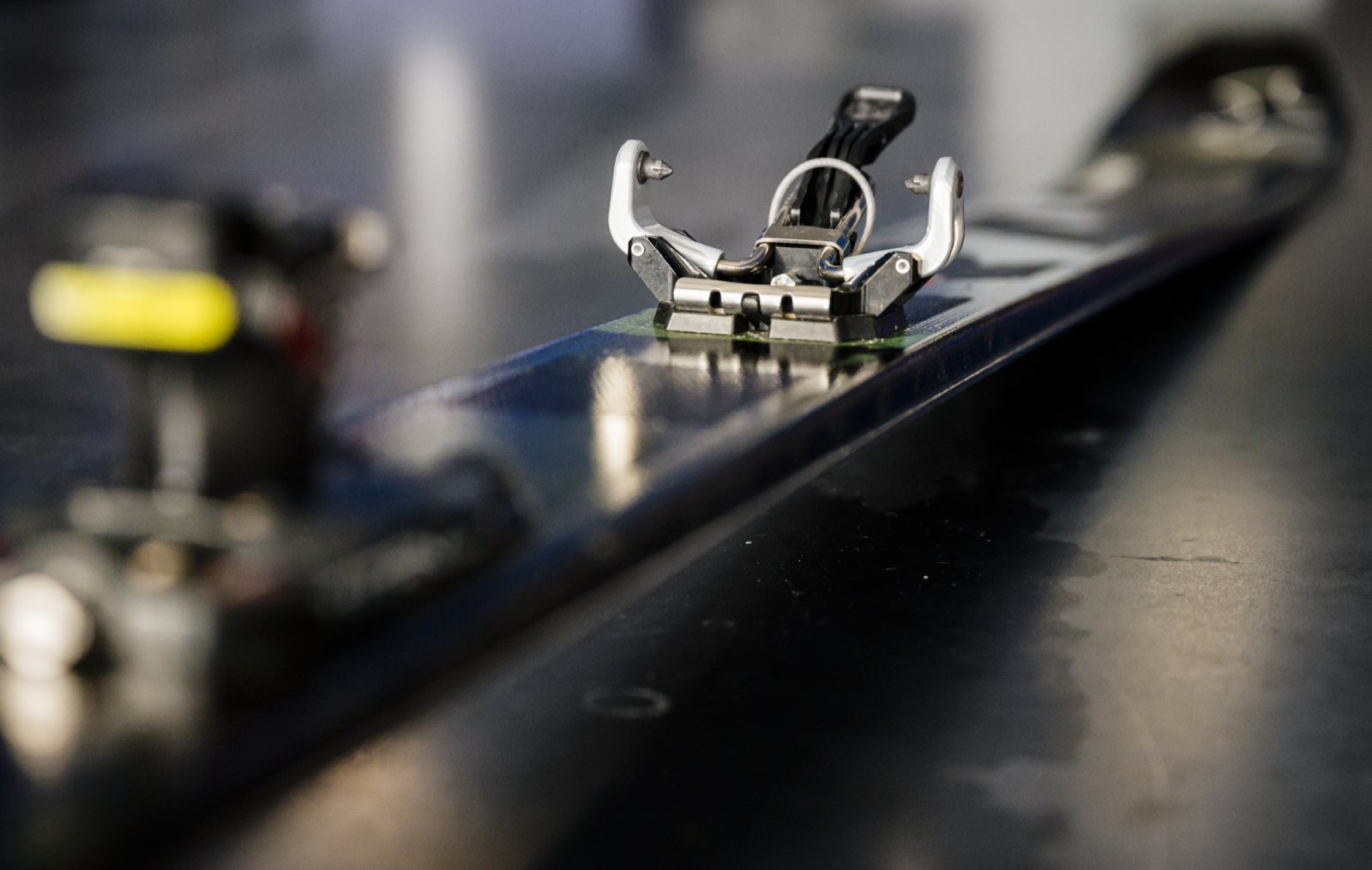
For boots, the light end of the touring boot category is most ideal, even if you ski 130 Flex Lange boots in the resort and think nothing short of that will do. But ask yourself, do you need a boot that stiff to ski powder in the backcountry? For many years I skied resorts on my stiff Tecnicas and tele’d in the backcountry on leather boots and later Scarpa T2’s. I went from Tele to mostly parallel turns (even on leather) and could dance in powder. When in the resorts on those vice-like Tecnicas, it just didn’t feel right as I didn’t have the finesse like I did in my softer boots.
The current crop of light touring models have been able to figure out enough stiffness and skiability that should satisfy anyone. When people try on a pair of light, new boots for the first time in the shop, many exclaim that they feel like hiking shoes rather than ski boots. If nothing else, your feet, knees, and hips will love a new pair of boots. For bigger folks who need some power, Dalbello, the king of 130 flex touring boots, is coming out with the Quantum series that are really stiff and will hike with the best of them. No matter which direction you go, comfort is extremely important for touring, so visit our Boot Fitter to narrow it down.
Tagged Products: Alien RS, Travers CS, Dynafit TLT 8, Dalbello Quantum
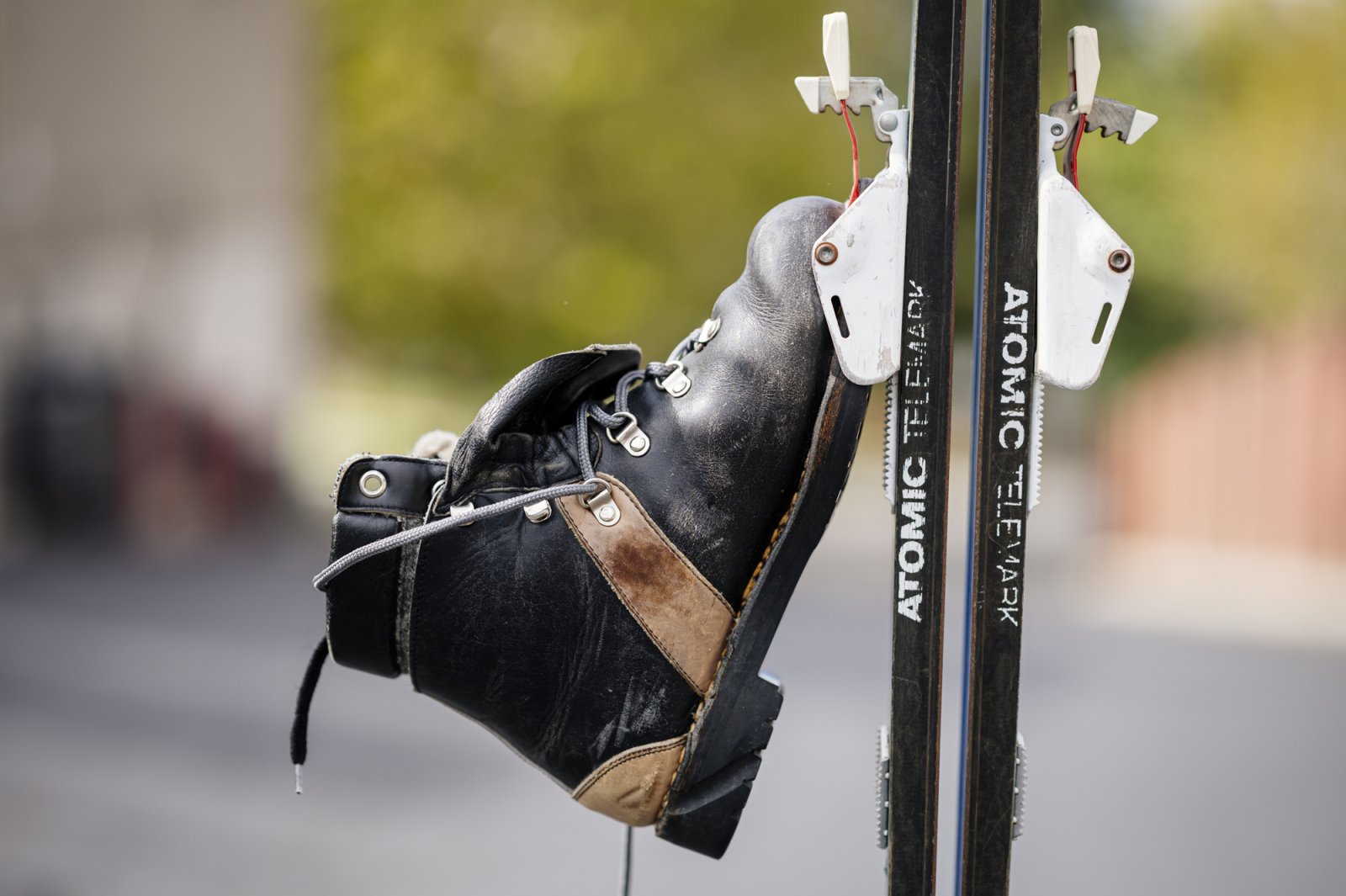
Finally, we get to skis. The latest backcountry skis generally have the sidecut, rocker and flex patterns so dialed, that they simply do not need much power to turn. Skis from Ski Trab, Atomic, Movement, Voile and others can turn with little input. Of course matching up the right ski, binding and boot for the skiing you intend to do is where Skimo Co is eager to assist.
For most ski touring situations though - such as fitness laps or just general skiing - ski widths are typically within a pretty narrow band of 71-85 mm. These are light enough, yet will be stable and fun for making beautiful, carved turns. If you don’t want to spend much money or time putting a package together, Dynafit has done it for you with the first ski/binding/skin package that ships already mounted, known around here as the Dynafit Seven Summits Ski Package.
Tagged Products: Movement Race Pro 77, Atomic Backland UL 78, Dynafit's Blacklight 74, Dynafit Seven Summits Ski Package
For a touch more powder performance, skis from makers Atomic, Ski Trab, and Movement offer wider waists that are still fast, light, and ski well in any conditions. Speaking of powder, now might be a good time to go over powder shapes with you. Balancing the desire to stay light yet float well in powder is an understandably common dilemma for customers. With powder skis there is a huge variety of widths, shapes, and rockers, so it can get a bit confusing. Having skied in the Wasatch’s famous powder-filled mountains for over 40 years, I have experienced the evolution of powder skis firsthand. Allow me to digress for a moment...
Narrow skis were the norm until the arrival of wider skis in the late 90’s. In fact, the Couloir 1995 Gear issue, the widest ski was the Voile Mtn Surf at 88mm with the next closest at 73mm. These are shockingly narrow when compared to what you’ll see beneath some skiers these days. As I mentioned earlier, those of us who have been around have had to ski a long time on narrow skis with no other choice (unless you mounted ski bindings on water skis). So for all those decades that we were on 64mm-waisted skis, how did we ski powder?
Turns out, it’s not the depth of the snow, but rather the snow density. Average snow density is 7-11% water and is quite easily skied on narrower skis. It is also the most common snow type, so why do so many people ski on such fat skis nowadays? My guess is marketing and too many ski movies. But even on those sweet 4-6% density “blower” days, a powder ski with a svelte 100-106mm waist will do just fine for most. So, unless you are pretty big or regularly ski in bottomless Hokkaido snow, it isn’t really worth lugging around super wide heavy planks as your everyday ski. In order to determine your best bet, I suggest factoring in your weight and the typical snow you ski (Sierra cement vs Colorado champagne). Although, if you can have a quiver of skis, Voile and DPS make some fatties that are specialized and really fun in the fluffiest of snow.
Tagged Products: Ski Trab Magico.2, Atomic Backland UL 85, Movement Women's Alp Tracks 85, Voile Hyper V8, DPS Wailer 106
Age Is Just A Number
In the end, I’d like to remind my fellow elder skiers that our age itself is not a limit - only our health or desire can hold us back! Uphill skiing or backcountry touring can be the most fun way to get exercise you will ever find. As you gain more fitness and confidence in the backcountry, you will start to expand your range. Soon you will surprise yourself at what you can do. The satisfaction of climbing a peak or arriving at an untracked powder field under your own power at 65-years-young is quite powerful. And truth be told, ever since I switched to ultralight AT gear, I’ve been able to delight in the guilty pleasure of passing 20-somethings on the skintrack. Take that young bucks!

Author Bio: A 1968 family ski trip to Michigan piqued my skiing interest but it was a 1979 trip to Utah that sold me. The mountains were bigger, the powder deeper, and the skiers more dedicated. My growing addiction for truly untracked powder led me to the backcountry in 1983 and I’ve been breaking trail in the Wasatch ever since. This will be my third season at Skimo Co.
Comments
thank you.
So many Ski partners whittled away over the years.
I feel fortunate that I am surrounded with a core of grizzled ski partners who are in their 60s and still rip like their later 30s.
As you mentioned the great advancements in ski gear really make it easier to still enjoy skiing.
Thanks again!
Joe
